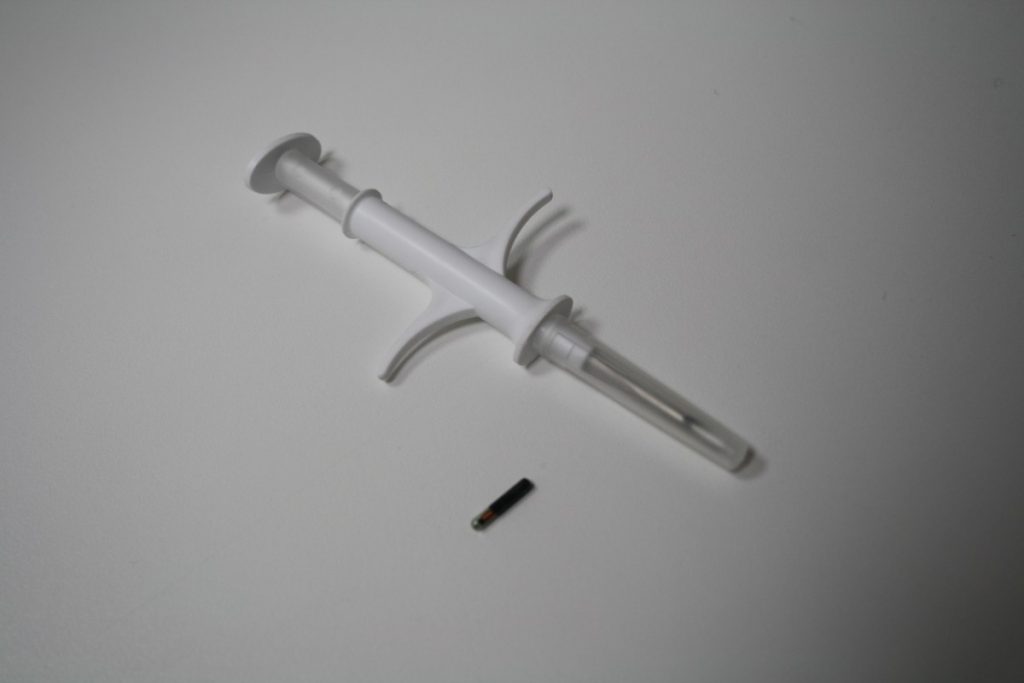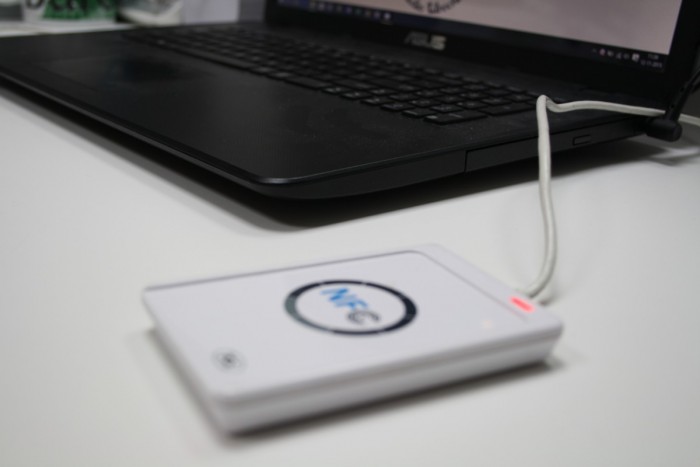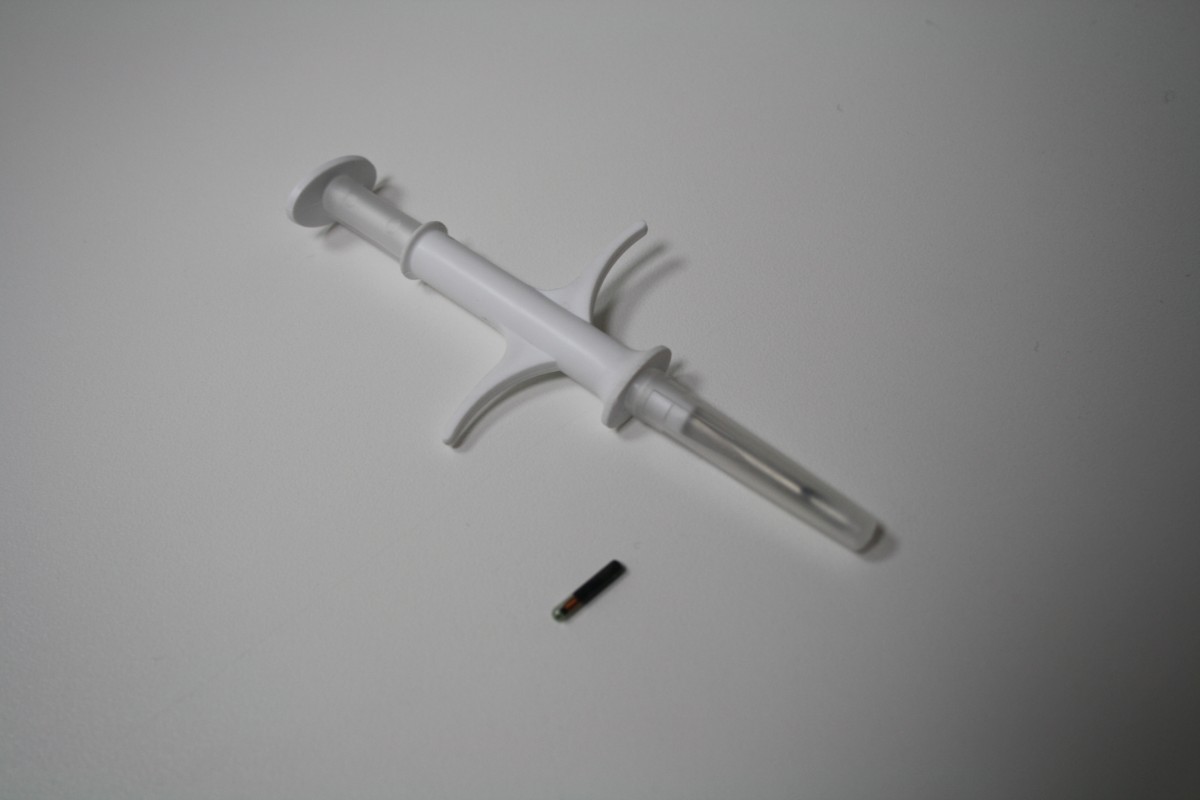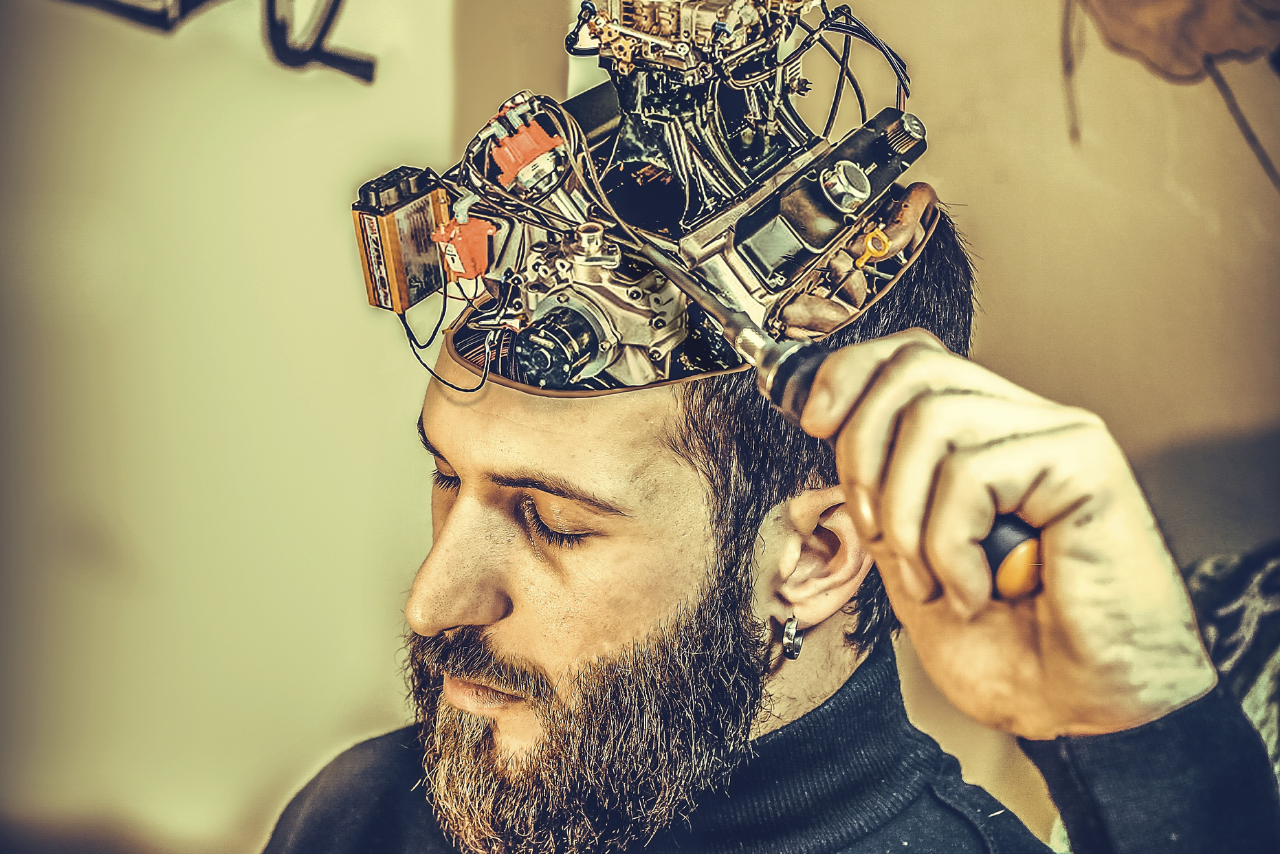Implantable RFID chip. What are human implantable RFID tags? What is the technology, procedure (with kit), what are the reasons & impact? Incl. 4 examples!
I carry an NFC chip in my hand. Why would you insert electronics into your body? How do you do that? Did it hurt? What does it bring me? What are the pros and cons?
Implantable RFID tags human
In this blog post you can read about the chip, how it works and of course why I now have such a thing in my hand. Later in the article I will talk about the broader development of digital implants, the DIY grinding movement and the impact of all these technologies.
After reading this article you will know what electronic aids people put in their bodies, for what reason, what this group is called and how others react to it.
Below is a summary of the most important points.
1 I have a chip implanted in my hand. The chip contains my contact details, so that I always have them with me.
2 The reason I had the chip installed is that I was curious how it would feel and because I think implantable technology will become more common in the future.
3 The subgroup of biohackers pioneering implantable technology are also referred to as DIY grinders.
4 The best known DIY grinders are Kevin Warwick (English professor), Neil Harbisson (skull implant to hear colors) and Liviu Babitz (compass implanted in chest).
5 The most violent response is that subcutaneous chips are the work of the devil.
In the rest of this article these points will be discussed, with substantiation and other insights.
This part is about the 2 chips in my hand and my experiences with it.
Human Microchip Implant
UPDATE! Now I have a second implant with which I can pay. Watch the video:
I have a NFC microchip implant in my hand for my contact information and bitcoin wallet. In this video I explain what I can do with the chip, why I decided to have this implant, practical issues, criticism, the future of this technology and more.
Company Dangerous Things
What company makes these implantable chips? And how did they get started? I interviewed Amal Graafstra, founder and owner of Dangerous Things about RFID implantable chips.
Man implanted RFID chip
“You don’t really see much of it.” My girlfriend looked at my left hand in amazement. There was still a large band aid on it. It still felt a bit sore. What had happened? There is now an NFC chip between the thumb and index finger of my left hand. A chip where I can put information on and with which I can open doors.
A few months earlier, I was at a Permanent Beta meet-up. It was a gathering of all kinds of cyborgs, people who, like me, had implanted a chip in their bodies. Cyborgs is a kind of nickname. Because is a pacemaker or an artificial leg really different from a chip in my hand?
The term “cyborg” was first used in a 1960 article called “Cyborgs and Space”. That article is mainly about the challenges associated with traveling and surviving in space. Today, people who have electronics in their bodies are called cyborgs. The word cyborg is a corruption of “cybernetics” and “organism”.
I heard from others that they received very strong reactions from people in their environment after placing their chip. Even threats. Fortunately, it was not too bad in my area. People are especially curious about what I can do with it, even my mother. She told me she had previously read a story in the newspaper about a woman who also had a chip implanted.

This part is about the (technology behind the) chip in my hand.
NFC chip implant
The chip that is now in my hand is manufactured by Dangerous Things (see photo above). This is the company of Amal Graafstra, one of my examples in the biohacking scene. NFC stands for ‘near field communication’. This means that the chip can only communicate at a short distance with a device that can read the chip.
One of the reasons why an NFC chip is so suitable for implantation is that the chip receives energy from the reader. In addition to my chip, I did not have to implant a battery or accumulator in my finger.
Technology
The chip is made of super strong glass (Bioglas Schott 8625) and has been made sterile. The chip is the size of a grain of rice: 2 millimetres in diameter and 12 millimetres long. The chip does not cause any malfunctions in an aircraft or problems with customs.
The main argument for me is that the chip has (or appears to have) no health implications. No foreign metals are released into my body through the glass.
If I want to, the chip will stay in place my whole life. But I still checked – if I want, the chip will be out again.
Procedure
The chip cannot be implanted in a hospital, at a doctor or in a technological laboratory. No, there is a piercing shop in the side street of the Voorstraat in Utrecht, the Netherlands. The owner (Tom) implanted the chip. Although interest in the chips is on the rise, the regular piercings and tattoos are by far the most important source of income for him.
I told him that I have experience with pricking, such as giving blood at the blood bank. Compared to those needles, the needle that implanted the chip is a lot bigger. Not surprising, the needle has to make an opening through which the chip with a diameter of 2 millimetres has to pass.
It felt a bit more painful than taking a blood test, but in the end it wasn’t that bad. To be fair, I was quite nervous, but that was perhaps also due to the television crew around me.
Feeling afterwards
Immediately afterwards, the place felt pretty sore, but that quickly decreased in the days that followed. Tom advised me not to use it too much force or to touch it a lot. It takes between six to eight weeks for the body to completely encapsulate the chip.
Another practical point. I had to buy a new phone to actually do things with the chip. My iPhone 5S does not have NFC technology. Now I bought an HTC One X from a good friend and put information on my chip.
What is the reason I had the chip installed?
Why implant a chip?
The question I get the most is what I can actually do with it. I often have to chuckle. “Actually, I can’t do much with it at the moment. I can buy a lock, after which I could open that lock with my chip. I can unlock my phone with it. ”
That is funny, but not very useful. At the moment it only contains my contact information, as a kind of digital business card.
Then why did I do it? The reason is simple. I am a biohacker and I want to try as much as possible in that area. So also a chip in my hand. I am convinced that this technology will become much larger. We are just at the beginning.
Applications in healthcare
Edwin was a fellow student of mine. We are still in touch a few times a year. Sometimes we meet up and other times we catch up on the phone. He works in a healthcare institution and was immediately curious when I told him about my chip. “Think what all this can mean in healthcare, Peter!”
That’s what makes me excited. The chip that is in my hand now, I may not be able to do much with it. But in the United States, companies and scientists are working on chips that can measure your heart rate, blood sugar level and other biological values in real time.
The chip can now replace my keys. Handy, who hasn’t forgotten their keys? But think about it. Your bank card also has an NFC chip. So you won’t need a bunch of keys and a wallet anymore. Because all that information is contained in a chip. Think even further: what if I can put my passport and driver’s license on the chip? My full identity on a grain of rice.
On the other hand, however, this entails all kinds of ethical, legal and political discussions. I like to initiate that discussion. With the chip in my hand.

In this section, I’ll take a closer look at the overall trend of implanting technology into the body, also known as DIY grinding. Below are a few examples.
Examples humans with implants
People who do DIY grinding, installing technology in their own body. Its main purpose is to expand the senses or get new senses.
These are well-known DIY grinders that have placed electronics in their body.
- Kevin Warwick;
- Neil Harbisson;
- Liviu Babitz;
- Others.
Below you can read a profile of them.
Kevin Warwick
One of the first people to experiment with implanting technology into the body is Kevin Warwick. He is a professor of Cybernetics at the University of Reading. In 1998 he started “Project Cyborg 1.0” [link at the bottom].
In August 1998, a silicon chip was implanted in his upper arm. The chip sent out a signal that allowed a computer to keep track of where he was in the building. In addition, he could operate doors, lights, heating and computers with the chip.
In 2002 he started “Project Cyborg 2.0”. The aim of this project is to investigate whether he could implant a new type of chip, with which his nervous system could exchange signals with a computer. The effect was that they could measure the nervous system signals in Warwick’s left arm on a computer and they were also able to make him feel things by programming signals into the computer.
Neil Harbisson
The most famous DIY grinder is Neil Harbisson. He can listen to colors, thanks to an antenna in his head. Not only ordinary colors, but also colors that normal people cannot see such as infrared and ultraviolet.
Neil was born with a hereditary defect that allowed him to see only shades of grey. In 2004, the antenna was implanted in his skull, after which he could hear colors. The camera hangs on the antenna, right in front of his eyes. That camera registers the dominant light spectrum.
On the back of his antenna, near his skull, is a chip that translates the information from the camera into vibrations. Those vibrations are perceived by the inner ear as tones. Each color has its own tone.
In addition to having a wider spectrum than “normal” people, he is also able to send images to his bionic eye. For example, he says he connects to the cameras of the International Space Station every day. In an interview with the NRC, he says: “People don’t realize that the space is full of colors.”
Skull implant
At the Brave New World conference 2017 in Leiden, I spoke with Neil Harbisson. He said that the world is actually designed for color. Think of the “Red Cross”, the country “Greenland” or the way in which metro lines in Tokyo are set up.
He talked about the benefits he now has with the implant in his skull. He explains that infrared can hear: “In a store I can hear whether the cameras and motion sensors are on or not.” He laughs: “The cameras are usually off in banks.”
The Bluetooth connection gives him even more options. In addition to space, he has friends all over the world who take pictures and send them to Neil. “I may get the picture of a sunrise in Australia right now and hear the colors of it.”
The implant in his skull isn’t the only upgrade. He also has an artificial dial that connects to his phone via Bluetooth. A friend of his, Moon Ribas, also has such a molar. By clicking with their teeth, they are able to communicate with each other via Morse code. Even if they are hundreds of miles apart.
After the lecture at Brave New World 2017 in Leiden, I interviewed Neil. Watch the video below or on my YouTube Channel.
Liviu Babitz
Liviu Babitz is the founder and CEO of the Cyborg Nest company. This company produces the North Sense [link below]. This is a device that you apply to your body with piercings. As with the Southpawn, you will feel a small vibration. According to Liviu, this creates a new sense of space and orientation.
He’s not alone. Brian McEvoy has developed a chip that works like a compass. You feel a small vibration when you face south. He calls this chip “Southpawn” [link at the bottom]. You can see a compass in the body as a new and extra sense.
During the Biohacker Summit 2017 in Helsinki, I interviewed Liviu Babitz. He had the compass implanted in his chest. He explains why he did this and shares his vision of the future of this technology.
Watch the video below or on my YouTube Channel:
Weird examples
These are some more examples of DIY grinders.
- Ears
- Finger
- Belly
- Eyes
- Skin
EARS: Frank Swain (BBC journalist) hacked his hearing aid and can now hear wifi signals (read more). Rich Lee has implanted a magnet in his ears, with which he can use “echolocation” like a kind of bat (read more).
FINGER: Jerry Jalava (a Finnish programmer) had an accident that caused him to lose his index finger. He replaced his missing finger with a USB stick (read more). Dann Berg had a magnet implanted in his fingertip. He can, for example, feel where electrical cables run in the wall (read more).
BELLY: Phone manufacturer Motorola is developing a password pill that can communicate with your computer and other devices. You no longer have to remember passwords (read more).
EYES: Chris James has “retinitis pigmentosa”. With this he has become blind. By implanting a microchip on the back of his eye, he was gradually able to see more again. In the British media it is also referred to as “eye-deposit” (read more).
SKIN: Researchers from the University of Bern (Switzerland) have placed a solar cell under the skin. The purpose of this solar cell, measuring approximately 3.6 square centimetres, was to supply a pacemaker with energy. The test with 32 subjects showed that the cell provides more than enough energy in every season of the year (read more).
What are (future) applications of placing chips in the human body?
Future of RFID implants
It all sounds a bit exaggerated, like a compass in your chest or a magnet in your finger. Yet people were immediately helped with chips in their bodies, such as Chris James who could see them again and Neil Harbisson who can now hear colors.
In other fields and for other applications, electronics in the body can be a solution. For me that is, for example, a continuous measurement of all kinds of bodily functions. But also more practical. In 2017, the Swedish train company SJ had a subcutaneous chip implanted in 100 commuters to check in and out at the station [link below].
Wouter Serdijn, professor of bio-electronics in Delft (the Netherlands), says that the chip under the skin is still a bit of a gimmick. ‘Most people find it too much hassle or just too scary’.
Somewhat similar to this is another project from Sweden. Employees and entrepreneurs in the start-up hub Epicenter could implant a chip to open the door, print and buy things. This was not mandatory, but they organized parties where a chip could be implanted [link at the bottom].
A couple of years ago I was at a grinding meetup. I wrote this part before I had a chip implanted in my hand myself. In this part I mainly focus on the reaction of others.
Reactions from others
At the meetup, Ruben was one of 10 volunteers who had a chip implanted. The biohacking meetups started with people-with-a-chip-in-their-hand who occasionally want to meet to discuss new developments in this field. One of them: ‘Why did I do it? Well, just because it is possible!’
Satanists and hand-cuters
Not all responses are positive. In the discussion afterwards, some said they were being threatened. “That chip in your hand is the work of Satanists” to “I get emails from people threatening to cut my hand off.”
Putting technology in your body provokes spicy reactions. On the other hand, it has long been accepted today that we have pacemakers in our bodies.
What was the conclusion of the Satanists? New technology requires a political and social discussion about what you should be able to do with that technology and what not. Technology in itself is nothing, it gets exciting when it comes to how you apply it.
NFC and RFID technology
That’s the nice thing about a meetup. Sometimes the conversation goes in all directions. The content of the evening was provided by Danny Haak, who talked about RFID and NFC technology.
What were new insights for me?
- RFID is a collective name for various technologies. NFC is also covered, but the term NFC is really just a marketing name.
- RFID provides enormous efficiency benefits in retail. Stock management is a breeze, with the latest RFID technology and handheld scanners.
- The RFID receiver is charged when it is in the field of the RFID transmitter. It’s a bit abstract how this works, but you can compare it to a magnetic field.
Tattoo as an antenna
How do you make the step from RFID chips in the labels of your H&M t-shirt to measuring biomarkers? According to Danny, that is not so easy: ‘We still have some challenges there. This is partly due to the fact that the chips do not work very well in the vicinity of liquids.’
The skin of your body is also quite a barrier. Although they are thinking about it: ‘The most difficult thing is the antenna. Perhaps you can solve that by applying a tattoo to your skin with metal ink. It then serves as the antenna of your chip.’
What is my conclusion?
Conclusion
Technology is developing at lightning speed. Exponential. More and more companies and people are working with subcutaneous chips. But that chip that I want to implant in my body that continuously measures everything? It is not yet commercially available to private individuals.
Well for handy tinkerers, the DIY grinders. For example, Tim Cannon, who can also be seen in the documentary by Floor and Laura, had the chip Circadia 1.0 placed in his arm that sends biomedical information to his smartphone [link below].
Worldwide, according to Amal Graafstra, the CEO of Dangerous Things (the manufacturer of my NFC chip), there are about 8,000 people who have had a chip or other electronics placed in their body. Voluntary then – he does not include patients with a peacemaker or hearing implant.
Tinkerers
It is my belief that electronics in our body is the next step from where we are at the moment: electronics on our body. In healthcare, in science and especially by enthusiastic ‘DIY tinkerers’, there is plenty of experimentation and research into this. They are the forerunners, but in time this will become more and more normal.
It actually makes a lot of sense. Neil Harbisson puts it very nicely: ‘We have received five senses from nature, why not add a sixth or a seventh?’
It lies in us as humans to always want more, to live longer and to expand our possibilities. A chip is a logical consequence of this. The question is not whether we will do it, but when and in what form. It is therefore important to start thinking about issues such as privacy and security now, because developments are moving at lightning speed.
What do you think?

Hire me!
Do you want to know more about RFID chips inside humans?
Please contact me if you have any questions! Like if you want to invite me to give a lecture, presentation or webinar at your company, at your congress, symposium or meeting.
Or if you want to book a session with me as an expert consultant on this area.
This section contains additional information: my presentation on the subject, a few videos and the list with all links.
Reading list
These are other relevant articles on my blog:
- What is human enhancement?
- What is transhumanism?
- What is biohacking?
- What is Neuralink?
- What are cyborgs?
These are external links that I have used, arranged per part.
- Sensor you can swallow
- Project Cyborg 1.0
- Wearable to track a child
- Southpawn project
- The North Sense van Cyborg Nest
- Tim Cannon and the Circadia 1.0
- Article over SJ in Zweden
- Article over Epicenter in Zweden
Do you want to have a RFID implant yourself? Or do you have a question or remark?
Please leave a comment!







Hi Peter
Your article is rich in information and I was able to learn a lot about microchips reading it. I have a query. If someone is implanted with a microchip against their will and don’t know its location how can they get rid of it.
I have tried a gps jammer which works for me but it is a temporary solution and I would to get rid of the chip permanently. Please let me know.
Hey Yatharth,
Thanks for your comment! I am not aware of instances where people are chipped against their will.
I have a chip in my hand, but I did it voluntary and on purpose.
Still, I think you can see the chip with an MRI. Not sure about the scanners you have at the airport (when I would fly, pre Corona, these scanners did not raise an alarm because of my own implant).
Hope it helps,
Peter
PS. You could also check this forum.
Hi…for the last 2 years and 4 months of my life I have been researching anything and everything about radio frequency. I honestly believe my ex put something on me. I can hear drones smartphones wire taps…ect…He did this without my permission. I live in a small town in Alabama so we don’t have a lot of crime therefore the police think I’m crazy even though I have been seen by 3 doctors who say otherwise. Every device I own gets hacked as soon as I touch it. My life has been turned upside down. Do you have any ideas on how to help me
Hi Magan,
Sorry to hear. I think the best place is to visit the forum of Dangerous Things. The community there knows a lot about implants.
Good luck,
Peter